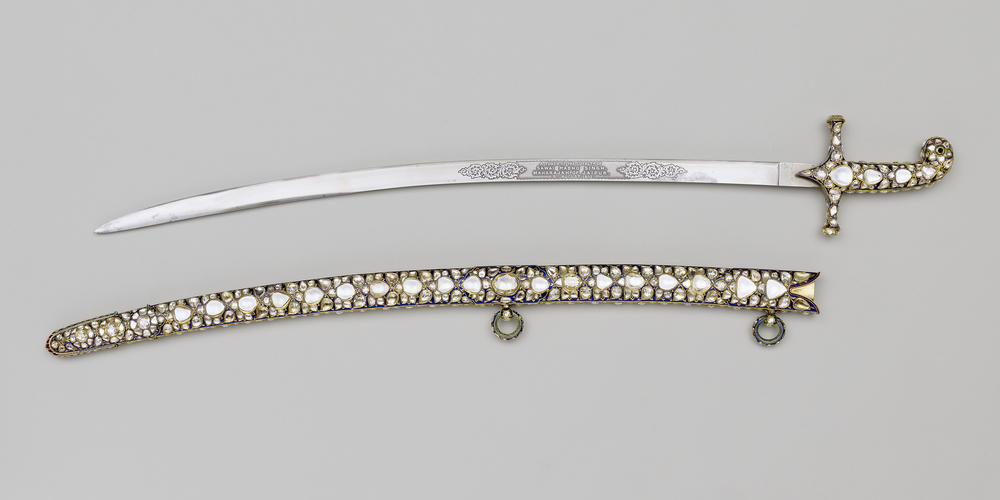-
1 of 253523 objects
Sword and scabbard c.1902
Gold, coloured enamel, diamonds, steel | 88.5 x 12.5 x 2.6 cm (whole object) | RCIN 11288

11288 inscription and scabbard.tif c.1902



-
This exceptionally rich sword and scabbard were presented to Edward VII on the occasion of his coronation by Sawai Sir Madho Singh Bahadur (1861-1922), Maharaja of Jaipur, one of the small group of Indian princes and nobles invited to attend the ceremony at Westminster Abbey in June 1902. For the journey to England, Madho Singh chartered a ship which was fitted with large copper vats containing sufficient Ganges water to sustain him and his retinue of 400 followers throughout both sea passages and whilst in England. At the eleventh hour, after their arrival in London together with large numbers of other foreign royalty and heads of state, the coronation was cancelled due to the King's appendicitis. It did not in fact take place until 9 August, by which time most of the royal guests had departed for home. The Maharaja, however, duly attended the postponed ceremony, having spent the intervening period staying at Kedleston Hall and other country houses, closely attended at all times by his cook and his jeweller.
The importance of the jeweller in the Maharaja's household is clear from this coronation gift, which is set with a total of 719 diamonds (there has been one loss, from the upper suspension ring). These include a large number of rose-cut and brilliant-cut stones as well as the flat, 'lasque' stones more commonly used in Indian jewellery, and it is possible that many of them were cut in Europe. They are held in 'rub-over' gold settings and backed with silver foil, which makes it impossible to assess their total weight with precision. The largest appear to be the two mixed-cut pale yellow diamonds at the end of the quillons, one of which is estimated at thirty-six carats. The combined weight of all the diamonds is possibly in the region of two thousand carats. The scabbard and hilt are of gold, finely enamelled in dark blue, green and red. The steel blade is of markedly poor quality by comparison.
Jaipur was one of the largest and richest of the Rajput states, with 2.8 million inhabitants in 1897. During his visit in 1875-6, Edward VII had laid the foundations of the Albert Hall in Jaipur, one of a number of new public buildings erected in the capital city at the time, including libraries, art galleries and hospitals.
Inscribed (etched) on the blade A TOKEN OF THE LOYALTY OF / SAWAI MADHO SINGH / MAHARAJA OF JAIPUR / 9th AUGUST 1902; an illegible armoury mark is incised on the neck of the scabbard
Catalogue entry from Royal Treasures, A Golden Jubilee Celebration, London 2002Provenance
Presented to King Edward VII of the occasion of his coronation at Westminister Abbey in June 1902 by Madho Singh II, Maharaja of Jaipur.
-
Medium and techniques
Gold, coloured enamel, diamonds, steel
Measurements
88.5 x 12.5 x 2.6 cm (whole object)
79.7 x 8.2 x 2.0 cm (loop, tassel etc extended)
Category
Object type(s)